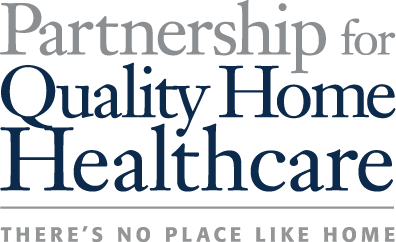March 20, 2014
Home Health Leaders Express Disappointment in MedPAC Report to Congress
Posted in: Press Release
Washington, DC – Home health leaders today expressed disappointment with the Medicare Payment Advisory Commission’s (MedPAC) March 2014 Report to Congress, which calls for further reductions to Medicare home health funding. The home health community has pointed to key methodological issues that warrant close attention and expressed concern that further cuts to the Medicare home health benefit will place vulnerable seniors, women, and jobs at even greater risk than is already being experienced due to deep cuts now in effect.
On January 1, the Centers for Medicare and Medicaid Services (CMS) began imposing a Medicare home health rebasing cut of 14 percent over the next four years – the maximum allowable under the Affordable Care Act (ACA). This cut is considered severe, since CMS itself conceded in the Home Health Prospective Payment System (HHPPS) Final Rule that “approximately 40 percent” of all home health providers will suffer negative margins as a result of the substantial losses imposed by this cut.
In light of methodological concerns raised by the home health community, the Partnership is undertaking an analysis that seeks to be responsive to those concerns by incorporating the following:
- Margins analysis that tracks with CMS’ admission that “approximately 40 percent” of all HHAs will experience negative margins as a result of the ACA rebasing adjustment;
- Margins analysis that tracks with Avalere Health’s analysis of Securities and Exchange Commission (SEC) filings, which found that the largest home health providers experienced an average net margin of just 2.8 percent in 2012;
- The estimated $72.5 billion in Medicare cuts already in place under current law (2011-2020) and the estimated additional $21.5 billion in cuts that are being imposed by CMS’ ACA rebasing adjustment of -3.5% per year between 2014 and 2017;
- The impact of the ACA’s productivity adjustment rate cut, which is slated to go into effect on January 1, 2015 and is estimated to reduce Medicare home health funding by an additional $8-10 billion over 10 years;
- An assessment of the ability of home health agencies (HHAs) to adjust to cuts by reducing visits (Medicare data indicates that the level of care in standard episodes is virtually unchanged);
- A broader data set than the limited cost report audits, which CMS itself did not use because the sample size of only 98 home health agencies (HHAs) represents less than 1 percent of all HHAs;
- The application of market basket increases to offset market basket costs, rather than a portion of the ACA rebasing cut (which would cause HHAs to bear increased market basket costs without any offsetting adjustment); and,
- A recognition that CMS applied the maximum rebasing cut allowable in the HHPPS Final Rule, which imposed an annual rebasing cut of 3.5 percent of the 2010 Medicare home health standardized payment rate, which was the maximum allowable cut under the ACA.
“Due to the vital role that MedPAC plays in the development of Medicare policy, patients, advocates and providers across the home health community are hopeful that future recommendations will benefit from a complete analysis of key factors,” stated Eric Berger, CEO of the Partnership for Quality Home Healthcare. “By Medicare’s own admission, the 14 percent cut in the HHPPS Final Rule will drive 40 percent of providers to net losses, therefore jeopardizing Medicare’s most vulnerable patients, devoted clinicians and thousands of small businesses. As a result, comprehensive data analyses are more important now than ever.”
The Partnership further expressed concern that any additional cuts to Medicare payments or the re-imposition of a beneficiary copayment, as recommended by MedPAC, would put Medicare’s most vulnerable patient population at risk. As shown below, new data released this month show home health beneficiaries are older, sicker, poorer, are more likely to be female, are more likely to be members of ethnic or racial minority populations and have greater functional limitations, disabling conditions, and greater difficulty completing routine tasks than all other beneficiaries in the Medicare program.
| Avalere Home Health Beneficiary Study: Key Findings | Medicare Home Health Beneficiaries | All Other Medicare Beneficiaries |
| Women | 60.07% | 53.9% |
| Beneficiaries aged 85+ | 24.4% | 12.1% |
| Beneficiaries with 4+ chronic conditions | 74.7% | 48.5% |
| Beneficiaries needing assistance with 2+ Activities of Daily Living (ADLs) | 23.5% | 7.6% |
| Beneficiaries at or below 200% of Federal Poverty Level (FPL) | 66.2% | 47.9% |
| Beneficiaries from ethnic or racial minority population | 19.3% | 14.9% |
| Dual-eligible Medicare-Medicaid beneficiaries | 26.7% | 17.7% |
“The Administration’s rebasing regulation disproportionately impacts the most vulnerable Medicare beneficiaries and women by sharply cutting funding for the care of the predominantly female home health beneficiary population, by placing further burdens on their predominantly female family caregivers and by placing at risk the jobs of predominantly female nurses and therapists,” added Berger.
“The Partnership strongly opposes additional cuts to home health or increased patient costs, and instead supports targeted, pro-patient program integrity initiatives and reforms that emphasis quality care and efficiencies within the delivery system,” Berger concluded. “Instead of further across-the-board cuts that put vulnerable seniors’ and women’s healthcare and jobs in jeopardy, the Partnership is urging the adoption of targeted reforms that will improve quality, efficiency and patient choice.”
The Medicare home health benefit currently provides clinically advanced, cost-effective and patient preferred healthcare to 3.5 million American seniors and disabled individuals.
